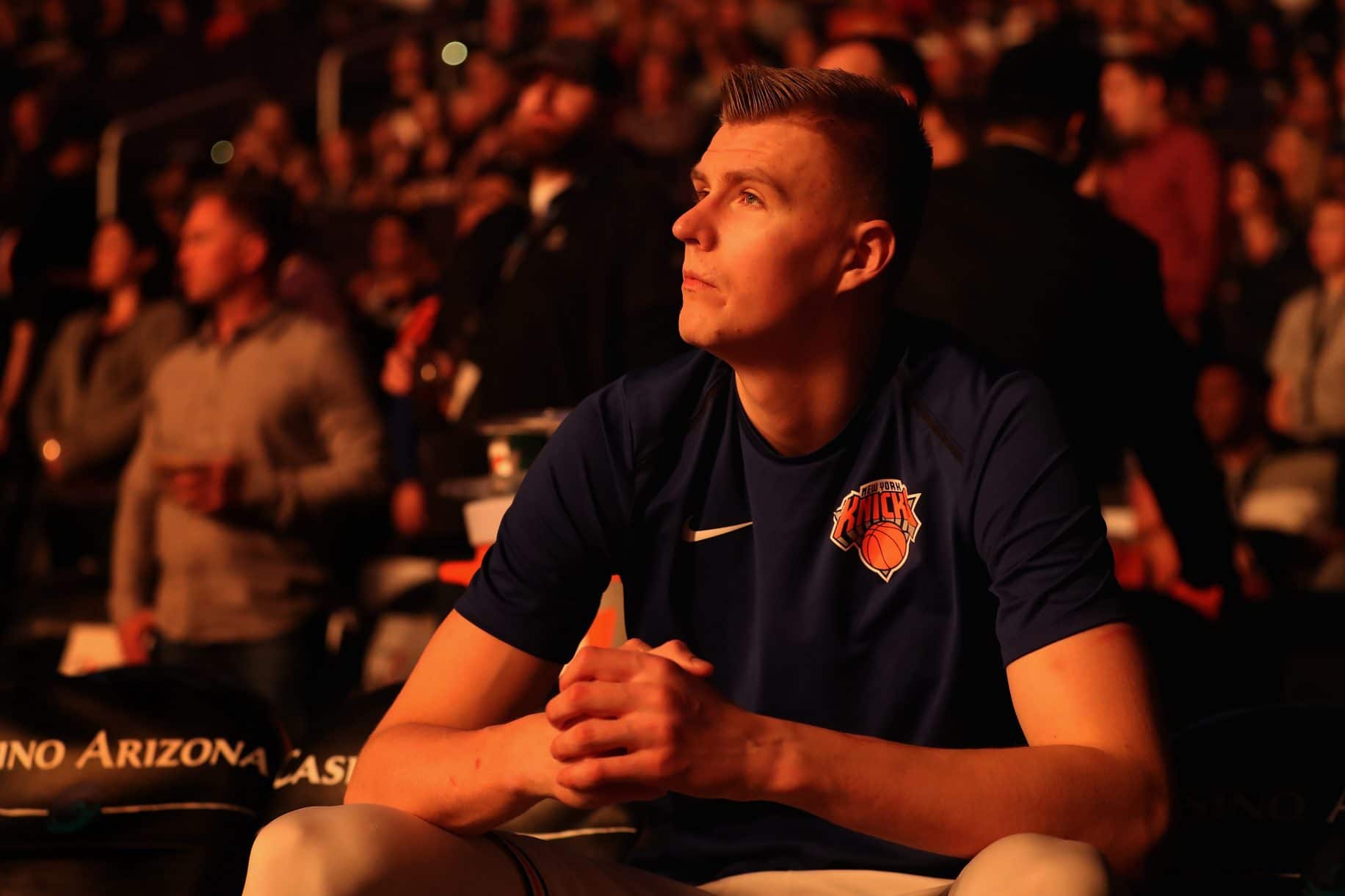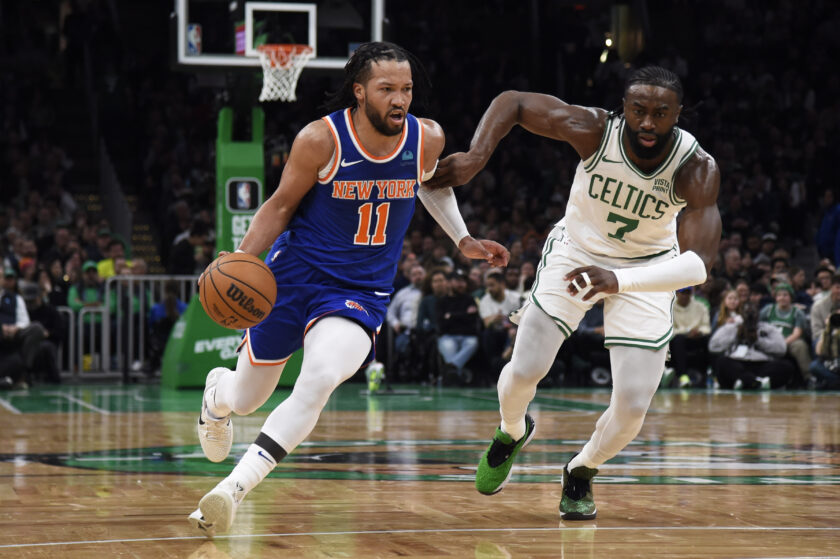The good, the bad and the New York Knicks: Stat-acular season numbers

The New York Knicks were once again stuck in a mediocre position this season. After a bright start, the Knickerbockers fell into a complete tailspin. We break down some good and bad stats from the season.
[sc name=”Knicks Header” ]Many things for the New York Knicks were done wrong this year that stretches from the roster to the play style to the organization itself. However, there were definitely some brights spots to take away from the last 82 games.
We take a look at some interesting stats that show how New York City fared in the NBA last season. These stats also give some insight as to where the Knicks should possibly make adjustments in years to come (All stats from www.basketball-reference.com and www.cleaningtheglass.com).
[sc name=”Knicks Title” text=”GOOD: Starting Lineup” ]The Knicks starting lineup of Jarrett Jack, Courtney Lee, Tim Hardaway Jr., Kristaps Porzingis, and Enes Kanter was very impressive this year. They played 770 possessions together this season, which is a pretty low mark, but was still the most used lineup on the team, and also the most effective. The Net Rating of this specific lineup was +9.2 aka really strong.
Given the many injuries to the team, specifically Porzingis, this could have been well over 1,000 possessions by the end of the year under different circumstances. Either way, the starting lineup was quite impressive for a team that finished with 29 wins. This means well for the future, since at least Porzingis, Hardaway Jr., Lee, and possibly Kanter will see more time together as the team moves forward.
Even though the lineup doesn’t appear to be one of the most competent at the surface, the mix of talent on the court resulted in a great outcome. Jarrett Jack is a veteran point guard that can competitively run an average offense. Lee is a great competitor that can defend perimeter players and also make and create shots. Tim Hardaway Jr. is a good option spotting up off the ball. Even if his defense is lacking, he can put the ball in the basket when the defense breaks down. Porzingis obviously is a two-way phenom. He was the primary scorer on the Knicks and also their best defender. Kanter, while he doesn’t help the defense much, adds a scoring touch inside and rebounding prowess.

The New York Knicks took far too many unproductive shots this season. For starters, their free throw rate was only 17 percent, which marks 26th in the league. 24.6 percent of their total shots came from behind the three-point arc. That is good for 29th out of 30 teams. 32.6 percent of their shots came at the rim, which was 23rd in the league. They were fourth in the league when it came to mid-range frequency, but this may not necessarily be a good thing. Most winning teams have abandoned mid-range shots for the most part.
The Knicks don’t just take the wrong shots. They also were inefficient at the shots they did take. They were 21st in the NBA in three-point accuracy. They were also 17th in field goal percentage at the rim. This combination of both shot selection and shot accuracy was pretty ugly, but lots can be chalked up to the roster construction. Losing Porzingis was a wrinkle no one planned for, but new head coach David Fizdale needs to prioritize getting better shots at the rim and beyond the arc.
[sc name=”Knicks Title” text=”GOOD: Rim Protection” ]The Knicks prevented a lot of opponent’s offense from coming at the rim. Other teams shot 60.9 percent at the rim against New York, which put them at fourth in the league. Porzingis was the biggest reason why, even though he played less than half the season. This is a focal point of the Knicks future with Porzingis. He is a fantastic rim protector and alters shots exceptionally well.
Not all the credit goes to KP, though. Kyle O’Quinn was a key rotation contributor after Porzingis went down. He is a stout big that is tough to finish against. He may not offer the same verticality as KP at the rim, but he is stronger and more physically imposing for opposing offenses to deal with. Even Kanter, with his many defensive limitations, helped keep the number low. While he might be lazy and awful at switching to the perimeter, that means he is sitting in the paint waiting for penetration, and that boosts this defensive number.
[sc name=”Knicks Center” ] [sc name=”Knicks Title” text=”BAD: Transition Offense” ]Getting the offense sparked quickly in transition is a great way to improve your overall offense. The defense is caught scrambling, and the offense can attack and cause difficult decisions for the other team, usually resulting in free throws, layups, or threes. Each of these categories is an area of needed improvement for this young Knicks team.
During the 2017-18 season, the New York Knicks were 25th in the league in frequency of transition offense. They were 19th in offensive efficiency as well. Both of these marks leave a lot to be desired, and a team that featured KP with three solid perimeter players should have been able to push more often. The Knicks preferred to play in halfcourt, but unfortunately, they don’t really succeed there either. The Knicks’ roster and set plays weren’t good in halfcourt this year, so focusing more on getting into action as soon as possible should be another priority next year.
[sc name=”Knicks Title” text=”GOOD and BAD: Home Record vs. Road Record” ]The Knicks were captivating in Madison Square Garden this last season. In home games, they finished with a decent 19-22 record, almost a .500 team. But on the road, things fell apart. At games outside of New York, they were only 10-31, a .244 winning percentage. In the Eastern Conference, the Knicks had the biggest difference between home and road records.
Surely, the road record will improve with more development from the team and a strong bond with the new coach. The Knicks need a lot more resiliency when they aren’t in the comfort of their home floor. At home, the Knicks are must-see TV when KP is healthy. The Garden erupts anytime he makes a move, and it’s not surprising they feed off the wild crowd. As the team grows, they can continue to feast at home, but need to work on remaining strong when they play in someone else’s building.
The New York Knicks have all offseason to turn things around and work on the skills that brought them minimal success. Having the key ingredients to turn things around, maybe David Fizdale will be able to cook up something far more positive next season.
[sc name=”Knicks Link Next” link=”https://elitesportsny.com/2018/05/10/new-york-knicks-5-people-who-should-represent-the-team-at-the-lottery/” text=”New York Knicks: 5 People Who Should Represent The Team at the Lottery” ]




